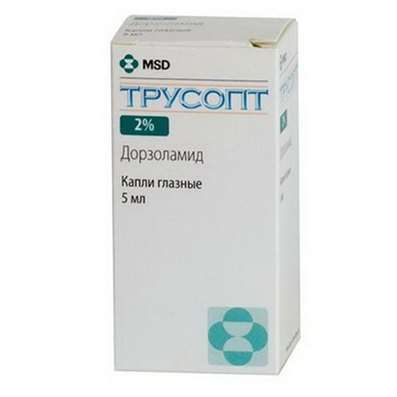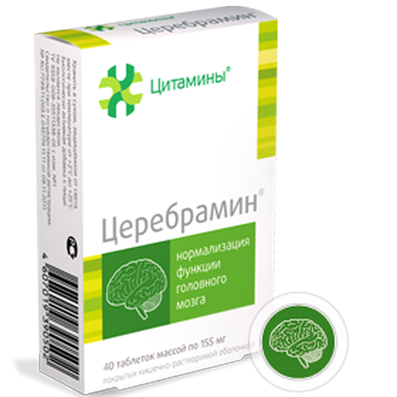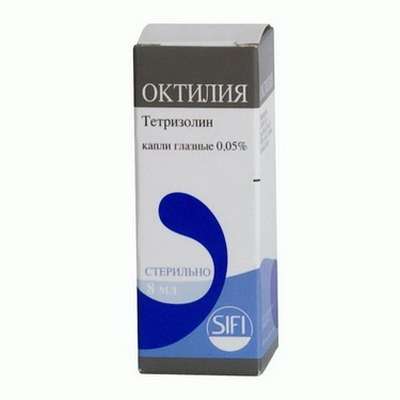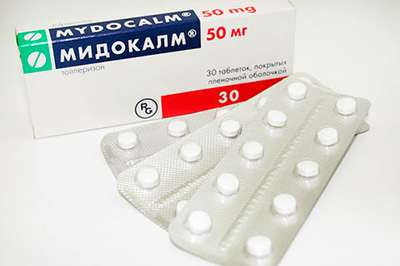Instruction for use: Carsil Forte
I want this, give me price
Active substance Silybi mariani fructuum extract
ATX code A05BA03 Silymarin
Pharmacological group
Hepatoprotectors
Nosological classification (ICD-10)
B94.2 Long-term effects of viral hepatitis
K70 Alcoholic liver disease
Cirrhosis of alcoholic origin, Alcoholic liver damage, Alcoholic liver damage, Liver diseases of alcoholic etiology,Alcohol Hepatopathy
K70.0 Alcoholic fatty liver [fatty liver]
Alcohol steatohepatitis, Fatty degeneration of the liver of alcoholic origin, Steatosis
K71 Toxic liver disease
Toxic liver damage, Hepatitis medication, Hepatitis Toxicum, Liver medication, Medicinal Hepatitis, Liver medications, Medicinal Hepatitis, , Dysfunction of the liver of toxic etiology, Toxic hepatitis, Toxic liver damage, Toxic hepatitis, Hepatotoxic effect of drugs, Toxic liver disease, Effect of drugs on the liver, The effect of toxins on the liver
K73.9 Chronic hepatitis, unspecified
Chronic hepatitis, Chronic hepatitis with signs of cholestasis, Inflammatory liver disease, Infection of the liver, Chronic reactive hepatitis, Chronic inflammatory liver disease, Hepatitis chronic
K74 Fibrosis and cirrhosis of the liver
Otecno-ascitic syndrome with cirrhosis of the liver, Inflammatory liver disease, Precircrotic condition, Cystic fibrosis of the liver, Cirrhotic and precircotic state, Cirrhosis with portal hypertension, Cirrhosis of the liver with portal hypertension and edematous-ascitic syndrome, Cirrhosis of the liver with portal hypertension, Cirrhosis of the liver with ascites and edema, Cirrhosis of the liver with ascites, Cirrhotic ascites
K76.0 Fatty liver degeneration, not elsewhere classified
Fatty hepatosis, Hepatosis fat, Dystrophy of fatty liver, Fatty liver infiltration, Fatty liver degeneration, Fatty degeneration of the liver, Steathepatitis, Fatty degeneration of the liver, Non-alcoholic steatohepatitis, Disorders of lipid metabolism of the liver, Steatosis, Steatosis states, Lipidoses, Acute yellow atrophy of the liver
T50.9 Other and unspecified drugs, medicines and biological substances
Poisoning by cauterizing fluidsá Correction of side effects of drugs, Drug intoxication, Medication intoxication, Acute drug poisoning, Acute drug poisoning, Acute poisoning with potent and toxic substances, Poisoning with medicines, Oxalate poisoning, Poisoning by potent and poisonous substances, Poisoning with iodine preparations
T51 Toxic effect of alcohol
Intoxication alcoholic, Alcohol intoxication, Intoxication with alcohol, Acute alcohol intoxication, Chronic alcohol intoxication
T65.9 Toxic effect of unspecified substance
idiosyncrasy toxic, Intoxication nitro compounds, Intoxication toxins, Professional intoxication, Poisoning nitrites, Poisoning toxins
Y57 Adverse reactions in the therapeutic use of other and unspecified drugs and medications
Z57 Occupational exposure to risk factors
The impact of chemical factors, The adverse effect of occupational risk factors, The adverse effect of occupational risk factors, Work in extreme professional loads, Work in harmful conditions, Work in hazardous industries, Working with occupational risk factors, Occupational lung diseases
Composition
Capsules 1 capsule.
active substance:
Milk thistle fruit extract dry 163.6-225 mg
(equivalent to silymarin 90 mg)
excipients: lactose monohydrate - 38.2-7.5 mg; MCC (type 101) - 38.2–7.5 mg; wheat starch - 15.5 mg; Povidone K25 - 3.7 mg; polysorbate 80 - 3.7 mg; silicon dioxide colloidal anhydrous - 3.4 mg; mannitol - 80 mg; Crospovidone - 14 mg; sodium bicarbonate - 6 mg; magnesium stearate - 3.7 mg
capsule: ferrous oxide black - 0.02%; iron oxide red - 0.03%; titanium dioxide - 0.6666%; iron oxide yellow - 0.35%; gelatin - up to 100%
Description of the dosage form
Hard gelatin capsules No. 0 are light brown in color.
The contents of the capsule is a powdery mass from light yellow to yellow-brown in color with agglomerates.
pharmachologic effect
Pharmacological action - hepatoprotective.
Pharmacodynamics
Karsil® Forte contains milk thistle fruit extract, the main active ingredients of which is a mixture of 6 flavonolignan isomers (silymarin): silibinin A and B, iso-silibinin A and B, silydianin and silikristin. Of these, silibinin is the most active. The mechanism of hepatoprotective action is not fully understood, the existing data prove the existence of several main mechanisms of action.
Antioxidant action. Silymarin interacts with free radicals in the liver and converts them into less toxic compounds, interrupting the process of lipid peroxidation, prevents the destruction of cellular structures, binding to free radicals and regulating the intracellular content of glutathione. Depending on the concentration, it suppresses microsomal peroxidation caused by NADPH-Fe2 + -ADPH. Affects enzyme systems associated with glutathione and superoxide dismutase. The components of silymarin inhibit the peroxidation of linolenic acid catalyzed by lipoxygenase and protect the liver mitochondria and microsomes from the formation of lipid peroxides caused by various agents.
Membrane stabilizing action. Silymarin stabilizes cell membranes and regulates their permeability, as a result of which hepatotoxic agents are prevented from entering hepatocytes. It has been established that the membrane-stabilizing effect of silymarin is due to its competing interaction with receptors to the corresponding toxins on the hepatocyte membrane. The effect of silymarin on membrane permeability is associated with qualitative and quantitative changes in membrane lipids - cholesterol and phospholipids.
Silymarin stimulates the regeneration processes in the liver (restoration of damaged hepatocytes) as a result of the activation of the synthesis of structural and functional proteins (ribosomal synthesis of RNA, protein and DNA) and phospholipids. It has been established experimentally that silymarin also suppresses the transformation of star-shaped liver cells into myofibroblasts, a process responsible for the arrangement of collagen fibers.
Anti-inflammatory effect. According to the results of experimental studies, it was shown that silybin at a certain concentration is able to inhibit the synthesis of LT B4 (leukotriene B4 / LTB4) in isolated Kupffer cells of animals. Silymarin, silybin, silidianin and silikristin inhibit the activity of lipoxygenase and prostaglandins synthase in vitro. In vitro studies on human polymorphonuclear leukocytes showed that one of the mechanisms for implementing the anti-inflammatory action of silybin is to suppress the formation of hydrogen peroxide.
Clinically, the pharmacodynamic properties of silymarin are expressed in the improvement of subjective and objective symptoms and normalization of indicators of the functional state of the liver (transaminases, gamma globulin, bilirubin).
Pharmacokinetics
Suction. After oral administration, silymarin is not completely absorbed from the gastrointestinal tract (up to 23–47%). Plasma Cmax is achieved 4–6 hours after a single dose is applied by mouth.
Distribution. In studies with 14C-labeled silibinin, the highest concentrations are set in the liver, lungs, stomach, and pancreas and in small amounts in the kidneys, heart, and other organs.
Metabolism. Subjected to enterohepatic recirculation. Metabolized in the liver by conjugation with sulfates and glucuronic acid. Glucuronides and sulphates were found as metabolites in bile.
Inference. T1 / 2 is 1-3 h for unchanged silymarin and 6-8 h for its metabolites. It is excreted mainly with bile (about 80%) in the form of glucuronides and sulfates, to a small extent (about 5%) by the kidneys in unchanged form. Does not accumulate.
Indications
In the complex therapy of the following conditions and diseases:
toxic liver damage;
conditions after acute hepatitis;
chronic hepatitis non-viral etiology;
liver steatosis (non-alcoholic and alcoholic);
cirrhosis of the liver;
prevention of hepatic lesions with long-term medication, alcohol, chronic intoxication (including professional).
Contraindications
hypersensitivity to the active or any of the excipients;
lactase deficiency, galactosemia, or glucose / galactose malabsorption syndrome (due to the presence of lactose in the formulation);
celiac disease (gluten enteropathy) - due to the presence of wheat starch in the formulation;
children under 12 years old (not enough clinical data).
With care: patients with hormonal disorders (endometriosis, uterine myoma, carcinoma of the mammary gland, ovaries and uterus, carcinoma of the prostate gland) - may be the manifestation of the estrogen-like effect of silymarin.
pregnancy and lactation
It is not recommended to use the drug during pregnancy and during breastfeeding.
Side effects
The drug is well tolerated.
Adverse reactions are very rare, and they are usually mild and transient.
Adverse adverse reactions are classified by frequency and system-organ class. MedDRA frequency is defined as follows: very often (> 1/10); often (> 1/100 - <1/10); infrequently (> 1/1000 - <1/100); rarely (> 1/10000 - <1/1000); very rarely (<1/10000); with an unknown frequency (no estimate can be made on the basis of existing data).
On the part of the immune system: very rarely - skin allergic reactions (itching, rash); with an unknown frequency - anaphylactic shock.
On the part of the organ of hearing and labyrinth disorders: rarely - strengthening the existing vestibular disorders.
On the part of the gastrointestinal tract: rarely - diarrhea as a result of enhanced function of the liver and gallbladder; with unknown frequency - nausea, vomiting, dyspepsia, loss of appetite, flatulence.
Interaction
Pharmacodynamic drug interactions
Silymarin does not have a significant impact on the pharmacodynamics of other drugs. When combined use of silymarin with oral contraceptives and drugs that are used in hormone replacement therapy, it is possible to reduce the effects of the latter.
interactions
Since silymarin has an inhibitory effect on the cytochrome P450 system, it is possible to increase the plasma concentration of drugs such as diazepam, alprazolam, ketoconazole, lovastin, vinblastine.
Dosage and administration
Inside, drinking plenty of water.
Adults and children over 12 years of age: treatment of severe liver damage begins with a dose of 1 caps. 3 times a day.
In milder and moderate cases, the dosage is 1 capsule. 1-2 times a day.
For the prevention of chemical intoxication - 1-2 caps. in a day.
The course of treatment is at least 3 months.
Overdose
No data on drug overdose.
Treatment with an accidental high dose: induction of vomiting, gastric lavage, the appointment of activated carbon, conducting symptomatic therapy if necessary.
special instructions
Influence on ability to drive motor transport and work with mechanisms. The use of the drug in monotherapy does not affect the ability to drive and work with mechanisms.
Release form
Capsules, 90 mg. In blisters of PVC film and aluminum foil, 6 pcs .; in a pack of cardboard 5 bl.
Pharmacy sales terms
Over the counter.
Storage conditions
In a dry, dark place at a temperature of no higher than 25 ° C.
Keep out of the reach of children.
Shelf life
3 years.
Do not use after the expiration date printed on the package.

 Cart
Cart





